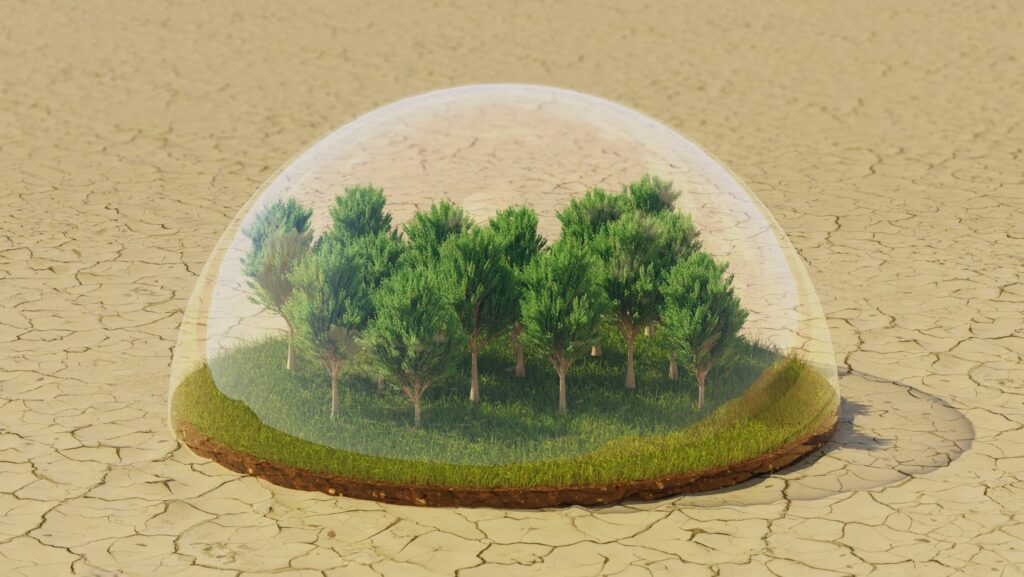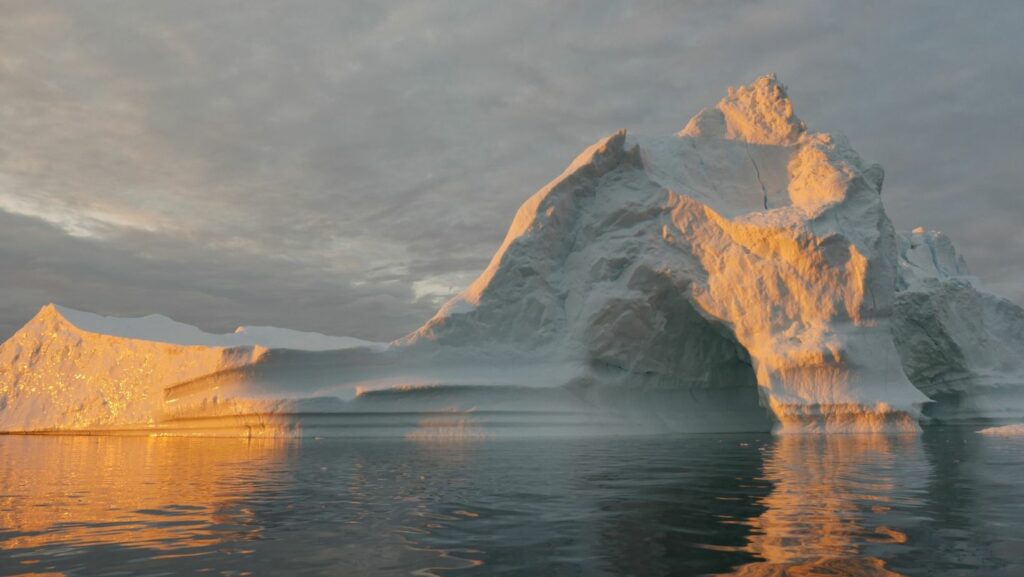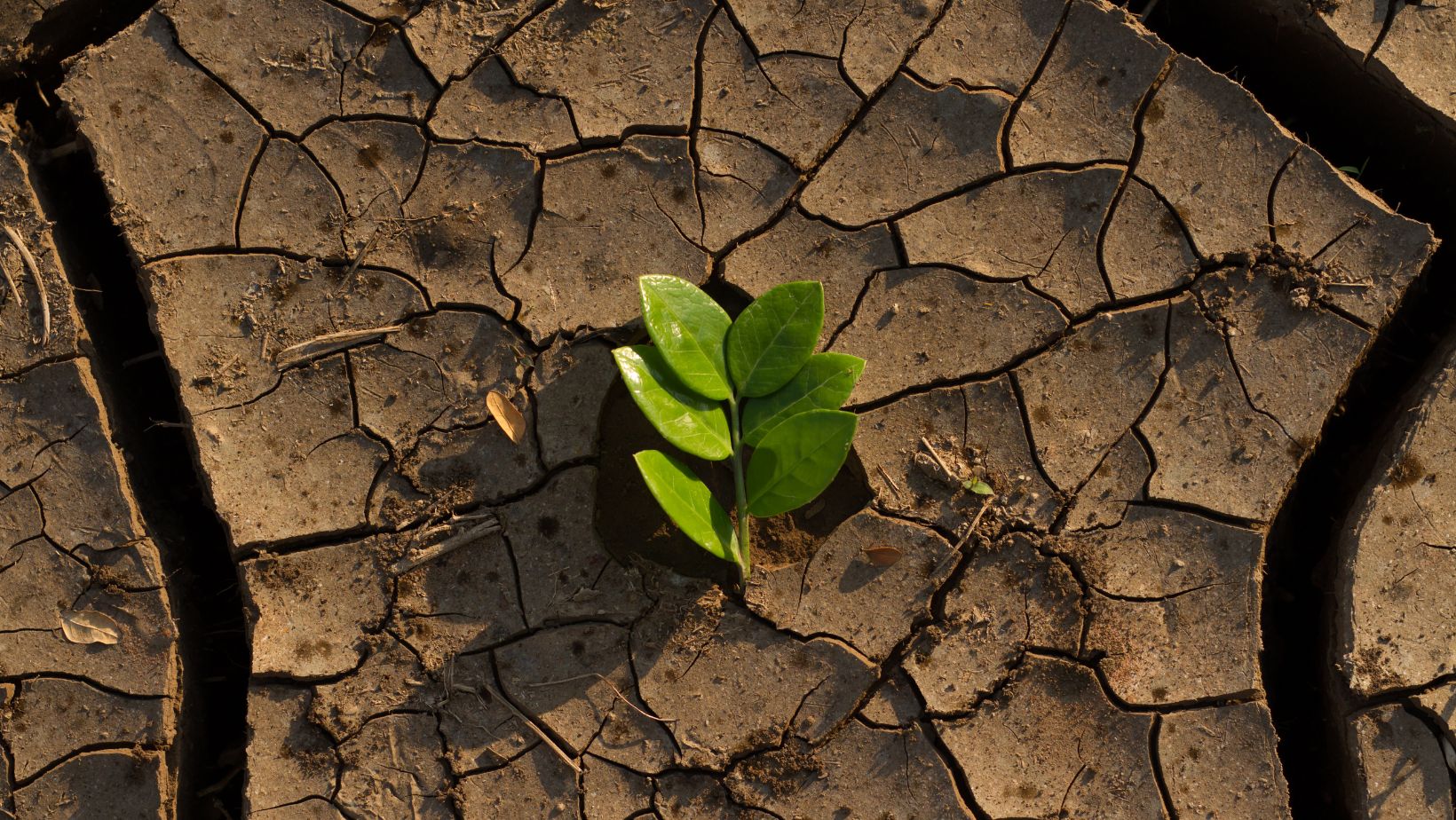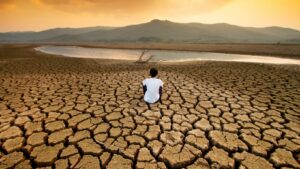What Is Climate Change?
Climate change is the long-term alteration of temperature and typical weather patterns in a place. Climate change could refer to a particular location or the planet as a whole. Climate change has been connected with damaging weather events such as more frequent and more intense hurricanes, floods, downpours, and winter storms. Together with expanding ocean waters due to rising temperatures melting polar ice, the resulting rise in sea level has begun to damage coastlines as a result of increased flooding and erosion. The cause of current climate change is largely human activity, like burning fossil fuels, like natural gas, oil, and coal. Burning these materials releases what are called greenhouse gases into Earth’s atmosphere. There, these gases trap heat from the sun’s rays inside the atmosphere causing Earth’s average temperature to rise.
The Greenhouse Effect
The greenhouse effect is the process by which Earth’s atmosphere traps some of the sun’s energy. This trapped energy makes Earth’s surface much warmer than it would be without an atmosphere. The greenhouse effect is not a new phenomenon. It was first proposed by Joseph Fourier in 1824 and later refined by Svante Arrhenius in 1896.

Earth’s atmosphere is made up of gases that trap heat in the form of infrared radiation. These gases are called greenhouse gases because they act like a “greenhouse” around Earth, trapping heat in the atmosphere. Greenhouse gases occur naturally and are essential to life on Earth. However, human activities, such as burning fossil fuels and clearing land for agriculture, have led to an increase in greenhouse gases in the atmosphere. This increase has been amplified by feedback loops, such as melting ice and thawing permafrost, which release additional greenhouse gases into the atmosphere.
Since the industrial revolution, concentrations of atmospheric carbon dioxide (CO2) have increased by more than 40%. This increase is largely due to human activity, such as burning fossil fuels, clearing land for agriculture, and cement production. Other human-caused emissions include methane from landfills and agriculture, nitrous oxide from fertilizers, and fluorinated gases from industrial processes. These emissions have led to an increase in greenhouse gases in the atmosphere and a corresponding rise in Earth’s average surface temperature.
Climate change refers to long-term changes in temperature, precipitation, sea level, and other measures of climate that occur over many years. Climate change can refer to regional changes in climate or global climate change (also known as global warming). Global warming is the gradual increase of Earth’s average surface temperature that is resulting from the greenhouse effect.
The Science Of Climate Change
Climate change is the long-term alteration of temperature and typical weather patterns in a place. Climate change could refer to a particular location or the planet as a whole. Climate change has been connected with damaging weather events such as more frequent and more intense hurricanes, floods, downpours, and winter storms. Together with expanding ocean waters due to rising temperatures melting polar ice, the resulting rise in sea level has begun to damage coastlines as a result of increased flooding and erosion. The cause of current climate change is largely human activity, like burning fossil fuels, like natural gas, oil, and coal. Burning these materials releases what are called greenhouse gases into Earth’s atmosphere. There, these gases trap heat from the sun’s rays inside the atmosphere causing Earth’s average temperature to rise.
Climate Change Is Natural
The climate has always been changing. It has cooled and warmed many times over the years. Climate change is natural.
The Sun
The sun is the ultimate source of energy for our planet. It drives the Earth’s weather and climate, and heats our oceans, atmosphere and land. The sun’s energy also creates wind, which powers ocean currents and drives the water cycle.
The sun is always changing. It goes through cycles of activity that last about 11 years. During a solar maximum, the sun’s surface is covered in dark sunspots. These are areas where the sun’s magnetic field is very strong. Solar activity also causes bright eruptions called solar flares. At a solar minimum, there are fewer sunspots and flares.
The amount of energy that the sun emits stays pretty much the same during these cycles. But when there are more sunspots, the sun’s magnetic field is weaker. This allows more high-energy particles to stream off the sun and into space. These particles can interact with Earth’s atmosphere to create dazzling displays of auroras near the poles (the Northern Lights and Southern Lights). They can also disrupt communications systems and power grids.

The amount of energy that reaches Earth from the sun varies depending on where Earth is in its orbit around the sun (a yearlong journey). Earth is closest to the sun in early January (perihelion) and farthest away in early July (aphelion). But this difference isn’t enough to affect our weather or climate because it happens slowly over time. A more important factor is how much of the Sun’s energy reaches different parts of Earth’s surface.
Volcanoes
Climate change is a naturally occurring phenomenon. The Earth’s climate has been changing since the planet was first formed, and it will continue to change as long as the Earth exists.
The main drivers of climate change are natural processes, such as the Earth’s orbit around the sun, volcanic eruptions, and variations in solar activity. These processes can change the amount of energy that reaches the Earth’s surface, and they can affect global temperatures.
human activities can also contribute to climate change. For example, burning fossil fuels releases greenhouse gases into the atmosphere. Greenhouse gases trap heat and cause the Earth’s atmosphere to warm.
Climate change is a complex issue, and there is still much we don’t know about it. But one thing is certain: The Earth’s climate will continue to change in the future, regardless of what we do.
The Ocean
The ocean is one of the key drivers of global climate. It helps to regulate temperature and stores huge amounts of heat and carbon dioxide. But what role does it play in natural climate change?
There are two ways in which the ocean can influence climate change. The first is through what is known as the “ocean conveyor belt”. This is a large system of ocean currents that helps to distribute heat around the planet. The second way is through changes in the amount of greenhouse gases that are dissolved in the ocean water.
The “Conveyor belt” Effect
The ocean conveyor belt is a large system of currents that moves water around the globe. This system is driven by differences in water density, which are created by differences in temperature and salinity. Warm, salty water is more dense than cold, fresh water, so it sinks to the depths of the ocean. This sinking water then flows back towards the poles, where it eventually bubbles back up to the surface and starts the cycle again.
The conveyor belt have a big impact on global climate because it affects how heat is distributed around the planet. For example, if there was a sudden release of cold water from the Arctic Ocean (perhaps due to melting ice), then this could have a cooling effect on global temperatures. Similarly, if there was a sudden release of warm water from the tropics (perhaps due to a volcanic eruption), then this could have a warming effect on global temperatures.
Changes in Dissolved Greenhouse Gases
Another way in which the ocean can affect climate change is through changes in the amount of greenhouse gases that are dissolved in its waters. Greenhouse gases like carbon dioxide and methane trap heat in the atmosphere, causing Earth’s surface to warm up. The oceans are very good at absorbing these greenhouse gases, which helps to slow downglobal warming. In fact, about 30% of all anthropogenic emissions (i.e., emissions caused by human activities) get absorbed by the oceans each year.
Climate Change Is Not Caused By Humans
The greenhouse effect has been around for millions of years and is only now being noticed because of advancements in technology. The greenhouse effect is a natural process that happens when the sun’s energy is trapped in the Earth’s atmosphere. This process makes the Earth’s atmosphere warm, which in turn helps to support life.
The Industrial Revolution
The industrial revolution, which began in the mid-1700s, was a period of tremendous growth and transformation. One of the most important aspects of this era was the proliferation of factories and other industrial sites, which released large amounts of greenhouse gases into the atmosphere.
Some scientists have argued that this increase in greenhouse gases is responsible for the observed rise in global temperatures over the past century. However, there is significant scientific evidence that suggests that other factors, such as natural variability in the Earth’s climate, are responsible for most of the observed warming.
The debate over whether humans are causing climate change is unlikely to be resolved anytime soon. However, it is important to remember that even if humans are not responsible for recent warming, we still need to take action to reduce our emissions of greenhouse gases.
Deforestation
Deforestation is one of the main causes of climate change. Trees play a vital role in absorbing carbon dioxide from the atmosphere and releasing oxygen back into it. When trees are cut down and burned, this process is disrupted, causing more carbon dioxide to be released into the atmosphere. This increases the amount of greenhouse gases in the atmosphere and contributes to climate change.
Population Growth
Climate change skeptics often point to population growth as the primary driver of greenhouse gas emissions and global warming, rather than human activity.
As the world’s population grows, so does the demand for energy, food, water, and other resources. This increased demand results in more greenhouse gas emissions, as well as deforestation and land degradation.
There is no denying that population growth is a major contributor to climate change. However, it is important to remember that human activity is also a major driver of climate change. In fact, according to the Intergovernmental Panel on Climate Change (IPCC), human activity is responsible for at least 50% of the global temperature increase that has been observed since pre-industrial times.
There Is No Consensus On Climate Change
Ever since the late 1800s, when the scientific community started to become aware of the greenhouse gases that could trap heat in the Earth’s atmosphere, there has been debate over whether humans are causing the climate to change. The debate has been In the past few decades, the scientific consensus has shifted to the view that human activity is the primary driver of climate change, but there is still a significant minority of scientists who disagree with this consensus.
The IPCC
The Intergovernmental Panel on Climate Change (IPCC) is a scientific intergovernmental body under the auspices of the United Nations, set up at the request of member governments, dedicated to the task of providing the world with an objective, scientific view of climate change and its political and economic impacts. It was first established in 1988 by two United Nations organizations, the World Meteorological Organization (WMO) and the United Nations Environment Programme (UNEP).
Since its inception, the IPCC has produced five Assessment Reports, as well as a number of special reports on specific topics. The IPCC does not conduct original research, nor does it monitor climate or weather related parameters.
Climategate
Climategate refers to the release of more than 1,000 emails and 3,000 other documents in late 2009 from the University of East Anglia’s Climatic Research Unit (CRU). The material was acquired illegally and released with the intention of discrediting anthropogenic global warming research. A series of inquiries found that the released emails had been “selectively quoted” and “taken out of context”, but also acknowledged that Freedom of Information requests had placed an “unreasonable” burden on the university.
Climate Change is Bullshit
It is important to remember that, even though the number of skeptics may be increasing, the overall consensus among scientist is that climate change is real and human activity is the main cause. So, even if you are not convinced by the evidence, it is still worth taking action to reduce your carbon footprint.


